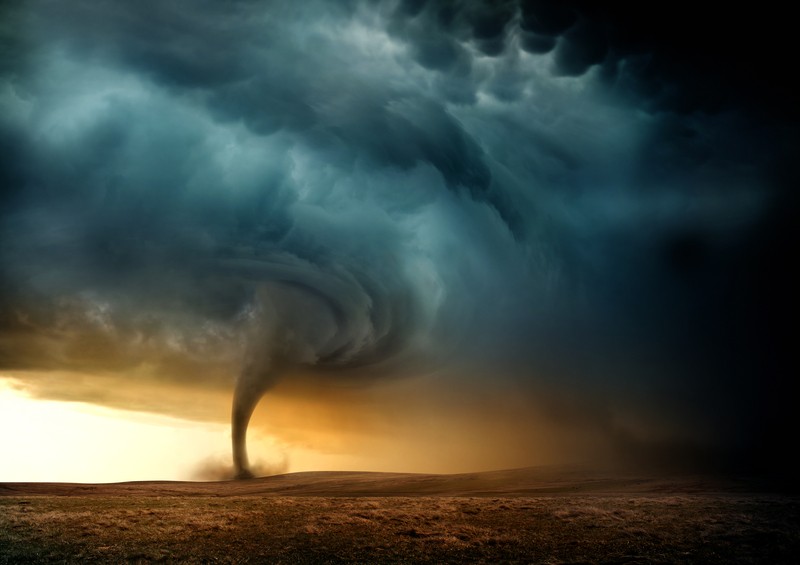Tip: If this is something that has been on your radar for awhile now and you've procrastinated, look at this as a wake up call. This weekend, no excuses. Go over the information below if its just you in your household or with the entire family if you don't live alone. Knowledge is safety!
Before a Tornado
-
To begin preparing, you should build an emergency kit and make a family communications plan.
-
Listen to NOAA Weather Radio or to commercial radio or television newscasts for the latest information. In any emergency, always listen to the instructions given by local emergency management officials.
-
Be alert to changing weather conditions. Look for approaching storms.
-
Look for the following danger signs:
-
Dark, often greenish sky
-
Large hail
-
A large, dark, low-lying cloud (particularly if rotating)
-
Loud roar, similar to a freight train.
-
If you see approaching storms or any of the danger signs, be prepared to take shelter immediately.
-
During a Tornado
If you are under a tornado warning, seek shelter immediately! Most injuries associated with high winds are from flying debris, so remember to protect your head.
[If you are in] a structure (e.g. residence, small building, school, nursing home, hospital, factory, shopping center, high-rise building)
- Go to a pre-designated area such as a safe room, basement, storm cellar, or the lowest building level. If there is no basement, go to the center of a small interior room on the lowest level (closet, interior hallway) away from corners, windows, doors, and outside walls. Put as many walls as possible between you and the outside. Get under a sturdy table and use your arms to protect your head and neck.
- In a high-rise building, go to a small interior room or hallway on the lowest floor possible.
- Put on sturdy shoes.
- Do not open windows.
[If you are in] a manufactured home or office:
- Get out immediately and go to a pre-identified location such as the lowest floor of a sturdy, nearby building or a storm shelter. Mobile homes, even if tied down, offer little protection from tornadoes.
[If you are in] the outside with no shelter:
If you are not in a sturdy building, there is no single research-based recommendation for what last-resort action to take because many factors can affect your decision. Possible actions include:
- Immediately get into a vehicle, buckle your seat belt and try to drive to the closest sturdy shelter. If your vehicle is hit by flying debris while you are driving, pull over and park.
- Take cover in a stationary vehicle. Put the seat belt on and cover your head with your arms and a blanket, coat or other cushion if possible.
- Lie in an area noticeably lower than the level of the roadway and cover your head with your arms and a blanket, coat or other cushion if possible.
In all situations:
- Do not get under an overpass or bridge. You are safer in a low, flat location.
- Never try to outrun a tornado in urban or congested areas in a car or truck. Instead, leave the vehicle immediately for safe shelter.
- Watch out for flying debris. Flying debris from tornadoes causes most fatalities and injuries.
We love that Ready.Gov thought of all these incredible tips and put them in one centralized location where we get the information we need. It's great that they included scenarios that involve being outdoors. When a tornado strikes, we can only hope that we are either at home with a safe room, or near our vehicle where we can drive to safety. But life doesn't always hand us ideal opportunities.
Have you survived a tornado or know someone who has? Tell us about the experience and share with us what helped you in that situation. Knowledge is power, survivalists. We take in everything we can get.
